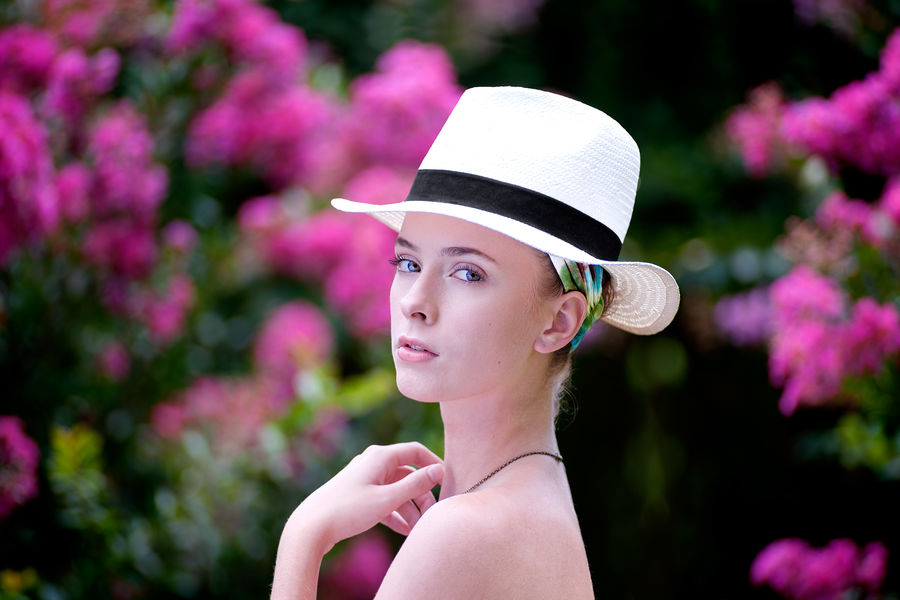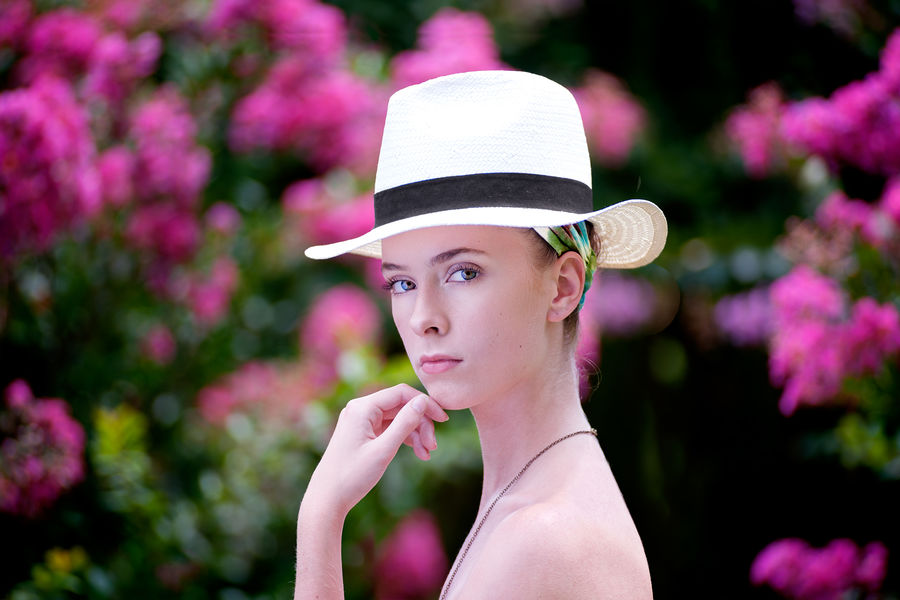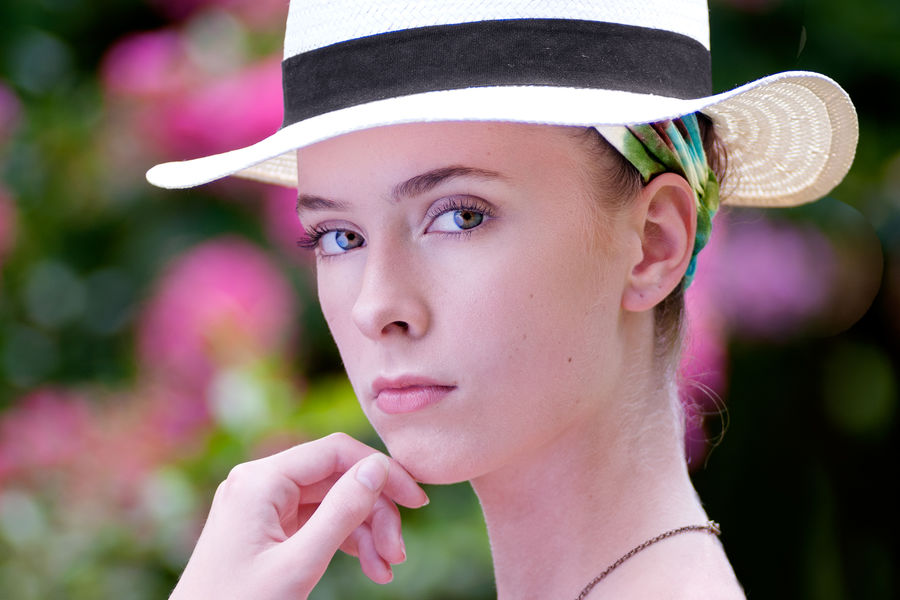Focal lenght for crop sensor camera
Sep 16, 2021 10:17:39 #
sl7346 wrote:
Thanks for the reply
When you don't use <quote reply>, your generic thank you applies to everyone or to no one.
Sep 16, 2021 10:27:22 #
The size of the camera sensor affects the "field of view". An APS-C sensor crops the field of view compared to a full-frame sensor used as a basis of evaluation. It's much the same comparing a medium format size sensor to that of a full-frame sensor which we would then say that the full-frame sensor crops the field of view compared to that of the medium format size sensor. I find it strange that there is such a fuss over sensor view crop when so many use their cell phone as a camera that has a really, really small size sensor.
Sep 16, 2021 12:03:42 #
amfoto1
Loc: San Jose, Calif. USA
DE Stein wrote:
Please allow me to piggy-back on this question wit... (show quote)
On full frame cameras the "traditional" portrait focal lengths are 85mm to 135mm. Those are the "short portrait" to "long portrait" focal lengths. {And, of course, something in between like 90mm, 100mm or 105mm is perfectly usable too.)
On an APS-C camera, full frame 85mm and 135mm translate to approximately 50mm and 85mm respectively.
On Canon APS-C camera 50mm x 1.6 = 80mm equiv. and 85mm x 1.6 = 136mm equiv.
On a Nikon or Sony APS-C camera 50mm x 1.5 = 75mm and 85mm x 1.5 = 127.5mm.
Not exact, but very close. (Lens focal lengths are rarely exactly as marked, anyway. They are nearly always "rounded off" to something close.)
So, in answer to your question:
Yes, an 85mm certainly can work quite well as a portrait lens on and APS-C camera. It will serve nicely as a "long portrait" lens. It will have a little more compression effect than a 50mm lens, but will require more working distance between you and the subject or will make for a tighter type of shot. One advantage of being a little farther from the subject may be that it allows for more candid type shots... that the photographer is a bit less intrusive than when using shorter focal length.
Of course focal lengths in between and even shorter or longer can be used quite effectively for portraiture too. Above just talks about "traditional" portrait focal lengths... which are short telephotos that are preferred for how they render people. Short focal lengths can exaggerate. Especially if used too close, a wider lens will make noses look big and ears look tiny. Also there is anamorphic distortion close to the edges when using wide lenses. This can make one of a person's arms look larger than the other, for example, as well as "stretching" them horizontally. But there are times and places when a 35mm or even wider lens might be used, with care. An example might be an "environmental" portrait, where a lot of the subject's surroundings are deliberately included... such as an artist in their studio. Longer telephotos also can be used. In fact, 200mm on full frame (approx. 135mm on APS-C) are popular with fashion photographers. Those do require a great deal or working space, though.
A previous response mentions, and it's true, smaller sensor sizes make it more "difficult" to render strong background blurs. It's a popular technique to strongly blur down backgrounds in portraits in order to make the subject stand out. This might be more important on location than in studio where the background can be more carefully controlled. Essentially, the difference between blur effects with full frame and APS-C is about one stop. In other words, to render as strong an blur on APS-C will require approx. one stop larger aperture. If you were using f/2.8 on full frame, you'll want to use f/2 on APS-C to get the same amount of blur. (Incidentally, with even smaller Micro 4/3 sensors it's about two stops and you would need f/1.4... and with extremely small sensors like 1/2.3" it's virtually impossible to get any background blur effect. Conversely, on larger medium format film or digital format an f/4 aperture might give the same effect as f/2.8 on so-called full frame.)
Sep 16, 2021 14:34:01 #
Like amfoto1 said "...Longer telephotos also can be used. In fact, 200mm on full frame (approx. 135mm on APS-C) are popular with fashion photographers..." Background bokeh is to be cherished... Once you've tasted the sweet fruit of epic bokeh you'll likely never go back to mundane optics...
Below are examples of a 300mm f/2.8 prime used for portraiture...
You decide, k?
Below are examples of a 300mm f/2.8 prime used for portraiture...
You decide, k?
Fashion Editorial with an 300mm f/2.8 prime on a FF body

(Download)
Fashion Editorial with an 300mm f/2.8 prime on a FF body

(Download)
Fashion Editorial with an 300mm f/2.8 prime on a FF body (up close and personal)

(Download)
Sep 16, 2021 14:49:13 #
sl7346 wrote:
Hi...everyone,
I still don't understand the Focal Lenght for crop sensor cameras. I have a canon 70d and use the 50mm lens. So, what is my focal lenght or the shutter speed for proper exposure for this lens?
Thanks advance for reply......
I still don't understand the Focal Lenght for crop sensor cameras. I have a canon 70d and use the 50mm lens. So, what is my focal lenght or the shutter speed for proper exposure for this lens?
Thanks advance for reply......
A 50 mm lens performs the same on a crop sensor camera as it does on a full frame camera BUT since a crop sensor is smaller than a full frame sensor the field-of-view is smaller AND quite often the image quality is better since you're probably using the sweet spot of a full frame lens.
bwa
Sep 16, 2021 18:32:46 #
Thomas902 wrote:
Like amfoto1 said "...Longer telephotos also can be used. In fact, 200mm on full frame (approx. 135mm on APS-C) are popular with fashion photographers..." Background bokeh is to be cherished... Once you've tasted the sweet fruit of epic bokeh you'll likely never go back to mundane optics...
Below are examples of a 300mm f/2.8 prime used for portraiture...
You decide, k?
Below are examples of a 300mm f/2.8 prime used for portraiture...
You decide, k?
Dazzling shots 🎯🎯🎯🎯🎯
Sep 17, 2021 20:59:25 #
Orphoto wrote:
Your 50mm performs the same as an 80mm lense would on a full frame body. All exposure settings are unaffected. No one here can tell you the "best" shutter speed for any given shot. The mild increase in magnification does mean a somewhat faster speed is needed to overcome any hand movement in holding it still.





If you want to reply, then register here. Registration is free and your account is created instantly, so you can post right away.




